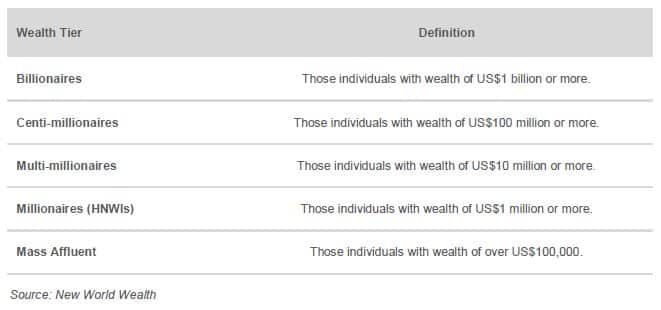The average household in Britain has over £15,000 in debt. You may think to yourself, well I’m not out £15,000. There’s no way I’d ever accumulate that much debt.
Debt is often connected to large purchases like homes, automobiles, or student loans. We know about that debt. We are prepared for it.
But the debt that creeps up over time is the trickiest. A little bit here, a little bit there seems fine. Before you know it, though, you’ve matched that £15,000 and then some.
Don’t let small mistakes in your financial planning lead to big debt. Check your habits against the following seven mistakes that we see most often. Read through for tips on how to avoid them and what habits to adopt instead.
1. Putting Your Emergency Fund on Hold
One of the most common financial planning mistakes is not having an emergency fund. This is enough money to cover your basic expenses for at least three to six months.
Maybe you’re in school or working your minimum-wage first job out of university. Saving what you can, even if it’s £20 a month, makes a difference.
But over the course of a four-year degree, that £20 a month grows to nearly £1,000. And that doesn’t include interest earned from your bank!
You may be out of school and established in your career. If you do not have an emergency fund, you need to start one as soon as possible.
Begin by sorting out how much money would cover six months of expenses (Netflix or Amazon do not count). Divide that number by how many months you can take saving up for it.
Once you have a plan, get your first payment into a bank account with a decent APY.
2. Paying Down Debt Without Saving
You may not have an emergency fund because you’re paying off student loans. You aren’t alone! In fact, in England, 1.3 million students receive financial aid each year.
But it’s imperative to keep saving even as you pay off your debt.
Loans often come with steeper interest rates. So your best course of action is to make larger payments against your debt upfront. In tandem, make smaller payments toward your savings.
Once you’re debt-free, you can save faster. Consider saving the same amount you were using to pay off your debt each month. After all, you’ve already practised not using that money for other things.
3. Not Saving for Taxes
Smart financial planning accounts for every expense, and that includes taxes! You try to think of everything: the mortgage, the kids’ education, daycare, pet care, investments, retirement. It’s easier to forget about taxes while planning your finances because they come up only once a year.
When you do get your tax return, you don’t want to find yourself pulling from your savings account. Average the taxes you paid over the last five years and divide that by 12. That’s the minimum amount you should be putting away each month for your taxes.
If you are in Australia, take a look at Sydney’s dedicated SMSF advisers for advice.
4. Not Budgeting for One-Time Expenses
Alright, so you’ve made an emergency fund, you’ve paid off your debt and you’ve budgeted for taxes. Well done, you! Next, we’re going to consider the other annual, one-time expenses you may not be considering.
For example, one annual event, in particular, comes around the same time every year in December. You may recall a lot of expenses associated with it: ribbon, wrapping, gifts and cards. We’re talking, of course, about Christmas.
It could be Christmas, Hanukkah or your child’s birthday party. Either way, make sure you add these one-off expenses to your budget. Think of it this way: a budget is also a great way to keep from overspending during the next holiday season.
5. Living Beyond Your Means
Speaking of overspending, that’s one of the easiest financial planning mistakes to make. Here’s where your consumer debt can creep up on you over time.
It starts with one handbag that’s just a little over your price range. Or a fantastic deal on that new teapot online even though you really don’t need a new teapot. It could even be buying your morning coffee at the cafe instead of making it at home.
These £5, £10, £15 splurges here and there may not seem like much, and they aren’t if they’re one-time-only purchases. But over days, weeks and months, you’re subtracting hundreds of pounds from your budget.
If you want to be able to splurge now and then, add it to your budget. Put away a few pounds a week and treat yourself to a fancy cafe treat once a month. Save up for that nice handbag or decide whether you can live with the teapot you already have.
6. Not Diversifying Your Investments
If you’re not investing (and you don’t have heaps of debt to pay down), you should start. It’s the best way to see your money grow over the long run.
But one mistake we see with new investors is not diversifying their investments. What this means is putting all your money into one kind of industry. For example, investing everything you can into real estate investments.
This isn’t a wise way to invest because it leaves you at a higher risk. If the real estate market drops, you’ll suffer a greater loss than if you’d diversified. If you’d invested in real estate as well as lumber, technology and food, for instance.
If you’re not sure whether you’ve diversified your accounts, speak with your bank or an advisor. They’ll be able to offer suggestions on ways to improve your profile.
7. Ignoring Your Company’s Retirement Plans
And while we’re on investments, let’s talk about saving for retirement. Even if you’re in your twenties or thirties, you should be contributing to a retirement plan.
And while we’re on investments, let’s talk about saving for retirement. Even if you’re in your twenties or thirties, you should be contributing to a retirement plan.
Thankfully, many companies offer retirement savings plans to their employees. These plans usually take a portion of your paycheck and put it into your retirement account. Sometimes, companies will even match your contributions up to a certain number.
Either way, it’s worth looking into! It saves you from spending that extra money and gives you an added incentive to save.
Strategies for Financial Planning
Organizing your finances may not be the most glamorous undertaking, but it is a critical one. Use these financial planning tips to help you navigate your finances with confidence.
And if you’re curious about getting started with a financial advisor, check out this article.







